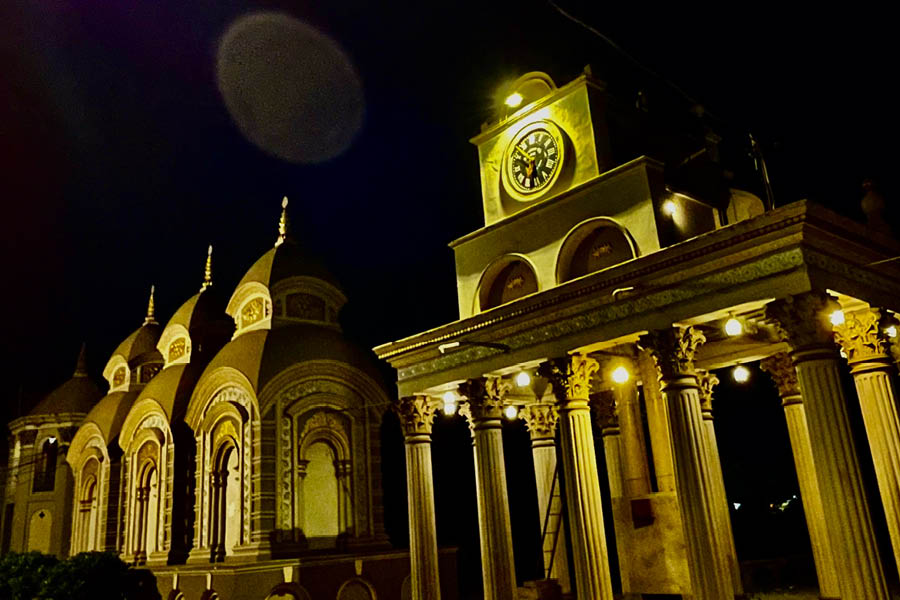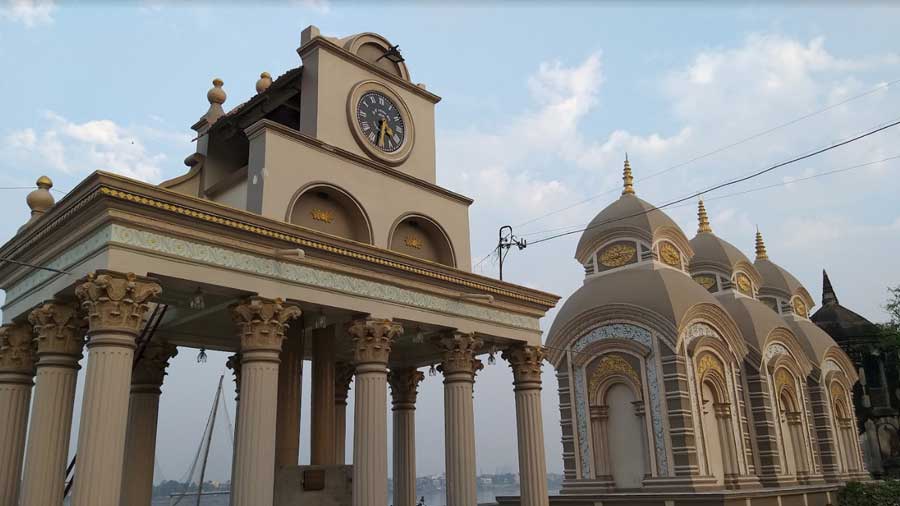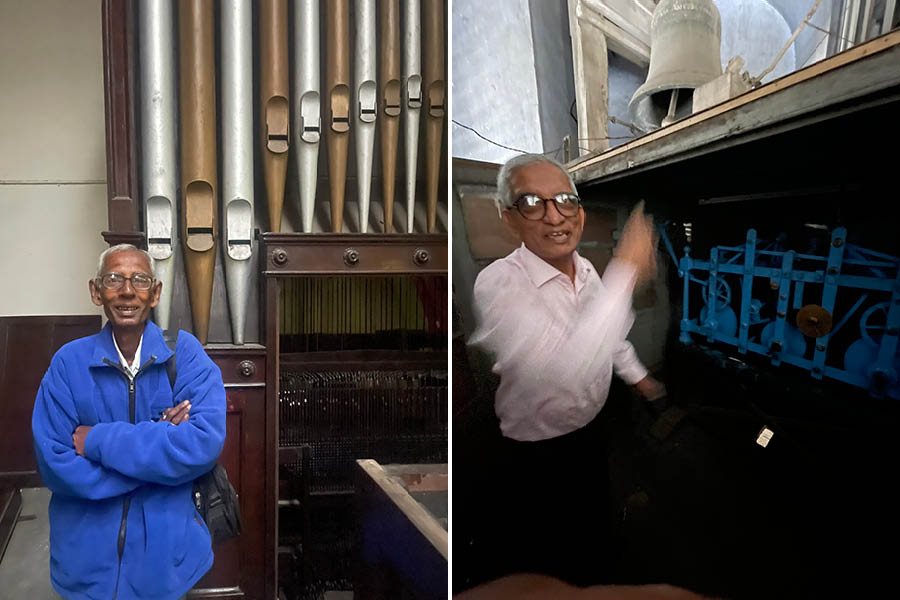‘Jabo kothaye?’ is the standard complaint of the travel-hungry Calcuttan, convinced that there are only two plausible weekend destinations: overnight train to Puri (where you don’t scatter precious day parts if you take the overnight train) or a flight to Bangkok.
This indicates either a lack of imagination in exploring weekend options in or around Calcutta, or a lack of destinations. The result is that the Bengali (or Calcuttan) exercises two options: home bound for most of the year and then dispersing in a hurry across the country during one compressed fortnight where even if you reached the Everest peak, there was a possibility of finding an already-reached Chatterjee or Banerjee in a monkey cap ready to welcome you with ‘Kolkata-thekey bujhi…’
I am getting ahead of my story. Last weekend, I was invited to Purna Chandra Das Thakurbari (or Rashbari) in Belur, more for a reconnaissance to explore tourism possibilities than soak in the sauna of a Saturday afternoon. For all those protected south Kolkata types (me) whose response to ‘Belur’ is ‘O baba, koto duur!’ this is how I got there: a car from Girish Park to Cossipore to Baranagar to Dakshineshwar to Bally Bridge to Belur. Forty-four minutes.
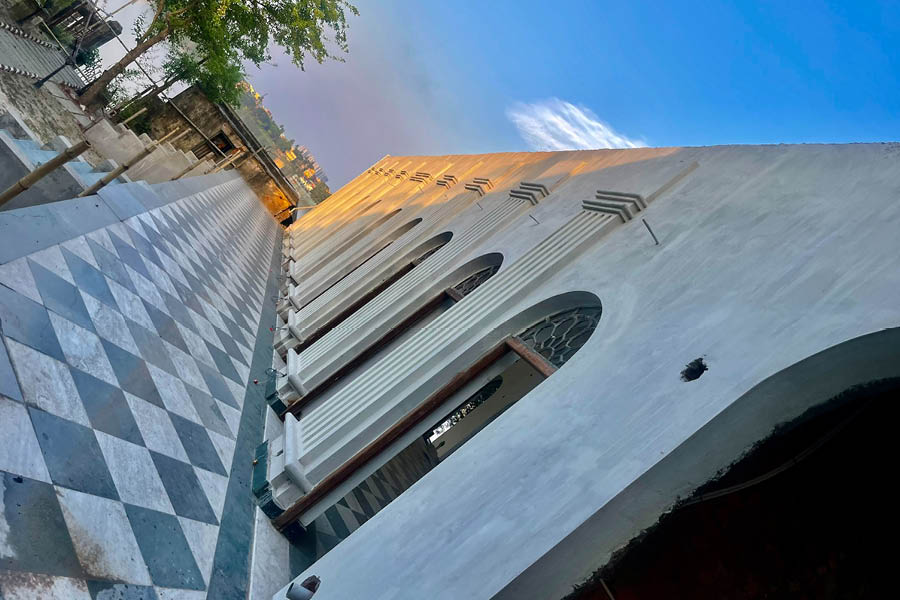
This riverine estate was created by brothers Hari Das Daw and Purna Chandra Daw
For the relevance of this column – that focuses on the built heritage of the city – there was a story to be pursued. The Daw family of north Kolkata came into wealth in the last decade of the nineteenth century. The rich neighbours (the Tagores in Jorasanko and the Mullicks in Chorbagan) were extensively landed. Their estates were proximate or within the agricultural lands owned by them, and generally used to live out leisurely rural existences. The Daws created their eight bigha bagan-bari getaway on the banks of the river (adjacent to Belur Math as it turned out).
This riverine estate was created by brothers Hari Das Daw and Purna Chandra Daw with extensive property investments, ownership of collieries and hardware shops. The second brother could be referred to, in polite contemporary terms, as ‘colourful.’ The matriarch extracted a vow from him, mathaye haath diye, that he would restore the family’s goodwill. The story goes that when the estate had been completed, he took his mother there – presumably by horse carriage weaving through the streets, where lived and died Sri Ramakrishna and then across the river by boat – until they arrived in Belur. The mother expected to see a palatial mansion with long columns of the kind she had probably seen in Marble Palace. When she stepped inside, what she saw was different: the son had – in atonement possibly of a life once lived – created a series of temples facing the river. Not quite Dakshineshwar, but in a way intimately sized in line with the scale and scope of the estate. And not just one mandir, but five – dedicated to Radha-Krishna and Shiv. The mother possibly broke down, hugged her son, rubbed her forehead on the mandir chaukhat, raised both hands to an impassive deity and said, ‘Only you could have done this.’
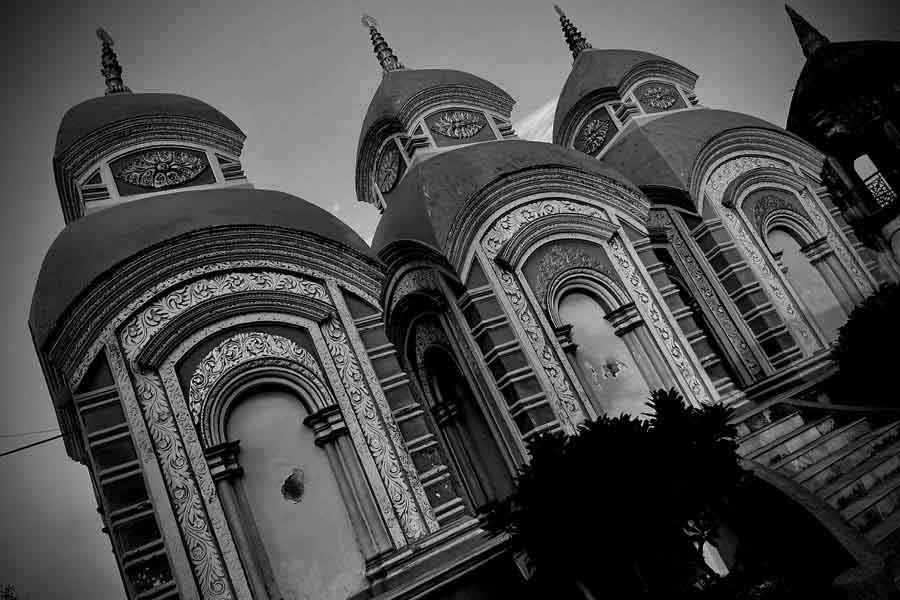
The temples dedicated to Radha-Krishna and Shiv
From where they sat in this estate, the Daws could see far – in more senses than one. They could foresee a few decades down the line: when business realities would change, the estate would always get short shrift, would not be maintained, would fall into disuse and would one day be sold out. The older brother Hari Das drew out a blueprint to counter this: he curated the interests of the family and dependents around an annuity income structure that ensured that their interests would be safeguarded irrespective of business health. The mother would get a fixed monthly remuneration; the daughter would get a Rs 1,00,000 lump sum of ‘company paper’ (presumably bonds) to see her through for years. The estate was converted into a debutter property trust, marked by guidelines related to ownership and development. Hari Das insisted that one line be added: ‘The trust will be headed by the eldest member of the family.’ The result: no squabbling for power.

From where they sat in this estate, the Daws could see far – in more senses than one. They could foresee a few decades down the line when business realities would change …. and the estate would be sold out
Hari Das was directionally right, but tactically wrong. He had, through properties invested in the trust, ensured that the earned rent would be turned over for the property’s upkeep. There was probably an asset-liability mismatch: the increase in rent could not keep up with the inflation required to run the property. More properties were vested with the estate trust, which is an index of the extensive portfolio of properties owned by the family on the one hand and a commitment to sustain the legacy asset on the other.
Until the early part of this century. The balancing of rent and expense became challenging. The Daws recognised that if they were to keep the estate going, they would need to do two things: for the last ever time they would need to develop one of their properties (Jatindra Mohan Avenue) and sell residential apartments, ploughing the proceeds into the debutter trust; besides, they would make structural modifications within the estate to empower it to generate an independent income for the first time.

The ornate entry to one of the temples
After more than 110 years, the Daws embarked on building a two-storeyed home stay facility on the estate. Six single rooms. With attached bathrooms. Facing the river. My host apologised for not being able to produce the ‘guest-er khata’ where he said visitors had written flattering things about the property. In this April heat, no room was occupied by a visitor; that must have been true for most homestays across the city.
Why do I find this property – and others of their kind – interesting?
One, they are at the cusp of a time in this country when micro-tourism is gaining traction – whether from weekend travellers or day-time Instagram chasers or fashion photographers.
Two, someone somewhere in the country has put religious tourism in the middle of our consciousness starting a few months ago; this property is attractively adjacent to Belur Math and on the banks of the Ganges.

The property is adjacent to Belur Math and on the banks of the Ganges
Three, the property comprises a sense of quiet, post-dusk therapeutic darkness and spaciousness.
This is what could be done better.
One, the facility needs a central idea – spiritual tourism – around which it can be positioned, the idea extending to meditation, yoga, wellness and cuisine.
Two, there is a story that Swami Vivekananda and Sister Nivedita visited this estate for a meal around the time of the ground-breaking of Belur Math in 1896; this is an emotional platform on which more stories can be built.
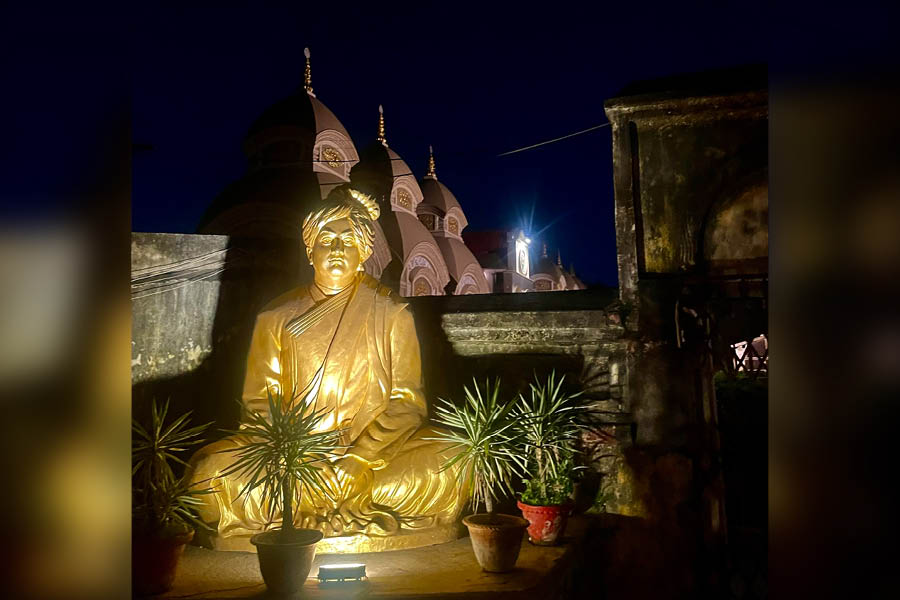
There is a story that Swami Vivekananda and Sister Nivedita visited this estate for a meal around the time of the ground-breaking of Belur Math in 1896
Three, the location needs ‘software’ – the spiritual add-ons – that can enhance the holisticness of the property. Maybe dances in praise of the presiding deities. Maybe religious theatre. Maybe related storytelling. So that those who come as guests have something to do in the evenings as opposed to staring into the blackness of the night (which by itself can also be therapeutic for light-exposed urban junkies like me).
Four, the layout needs some reorganisation to deepen its engagement with the river, its principal asset.
When I was leaving, the striking mechanism of the 120-year clock struck seven. It is a sound that has been extinguished off the consciousness of us city types. Atanu Daw, my host, then told me something: ‘One can hear this clock if you stand on the other side of the river.’
I came away with a thought: maybe I will return by taking the metro from Rabindra Sarobar to Dakshineshwar and ask Atanubabu to send me a car to collect me; maybe I will request Alokananda Roy to curate Balmiki Protibha in the large-ish garden within the estate; maybe I will curate a year-end music event on the banks of the river; maybe…
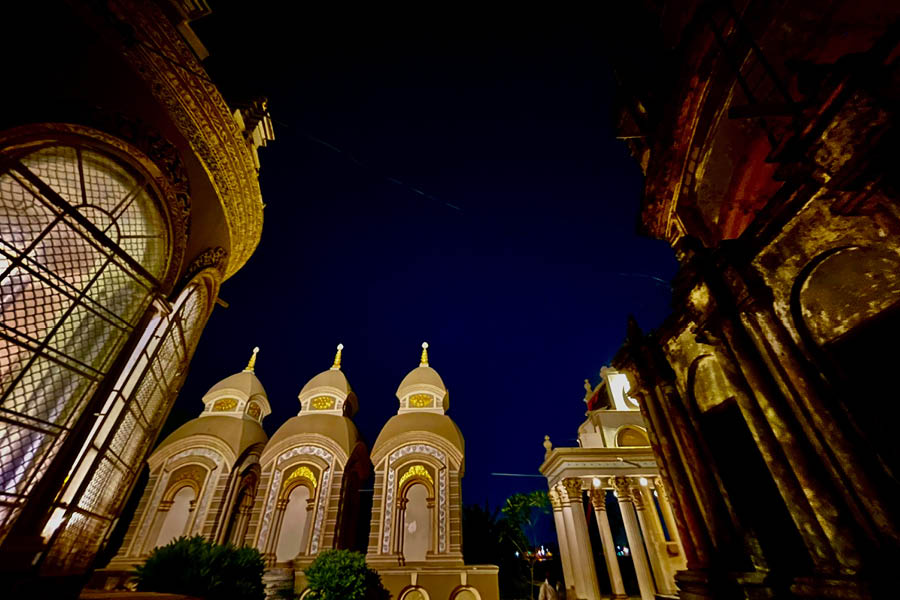
The layout needs some reorganisation to deepen its engagement with the river, its principal asset
This brings me to the end. While taking the metro home, I began to think…there would be so many heritage-rich properties in and around Kolkata waiting to be patronised while we scatter our heard-earned dollars in the Pattayas of the world. What if we got a handful of mavericks on the table so that someone comes forward to say ‘Atanubabu, I will provide you design improvement suggestions pro bono’ and a barge owner says ‘Will you be able to serve us a meal for 50 if we bring travellers from Calcutta by boat?’ and if a homestay owner says, ‘Why don’t we get into a partnership so that the spillover travellers from my side can be hosted in your property and yours in mine?’ and if a college graduate comes in with ‘What if I curate a Vivekananda-centric walking tour through Belur for your guests’ and then the biggest hospitality brand of the country steps in to ask ‘We just love your property and can we buy out all your rooms for a year so that we may market them to high net worth international travellers?’
You may say I am dreamer.
